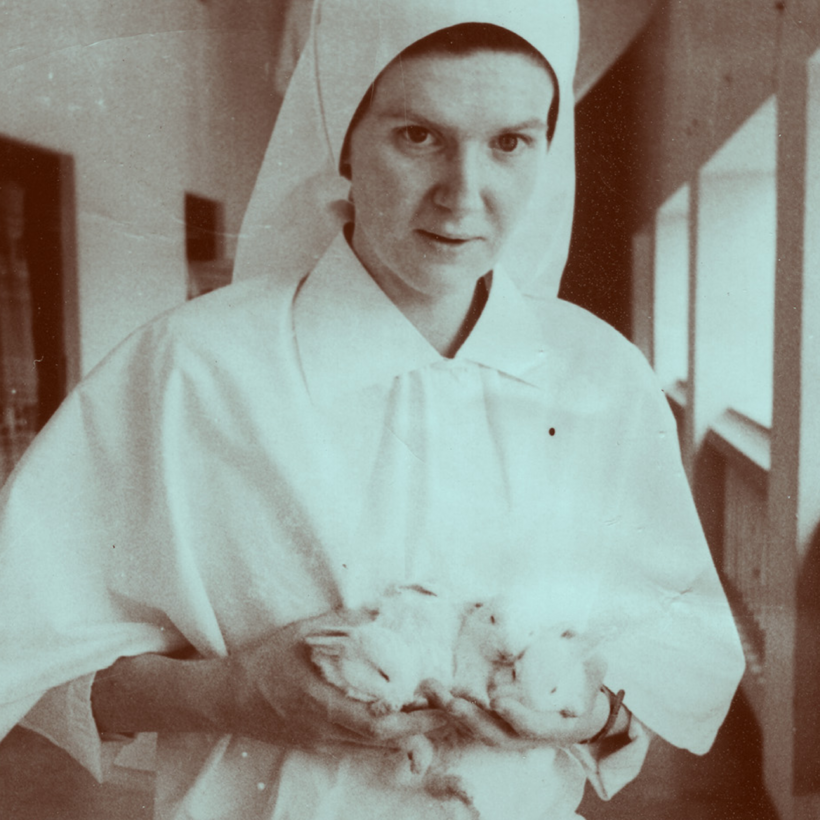Whenever I describe the story of Nazareth Hospital, the subject of my new book, The Sisters of Mokama, most people ask how I learned about it. The easy answer is: it’s a family story.
In 1947, six Catholic nuns from Kentucky traveled to Mokama, India, to start a missionary hospital. The country was just emerging from the devastation of World War II, while Partition had just split colonial India into two countries. The nuns started the hospital in an empty warehouse with no running water or electricity, and with few medical supplies. Within two years, they established a working hospital, primary-health-care clinic, and nursing school.
In the early 1960s, my mother studied nursing at the hospital. Growing up, I heard the vague outlines of its story—the strict nuns and their arbitrary rules; the desolation of life in a small town in northern India.
But family stories weren’t nearly enough to tell the hospital’s full history. My mother was 15—the same age that my older daughter is now—when she left her home in southern India to study in Mokama. She remembers her experience at the hospital, but she was just a student. She never knew much about the order’s history, the hospital’s origins, or the reason six nuns wanted to start a hospital in India.
Why had these American women gone so far? How did they land in an obscure corner of India?
The nuns started the hospital in an empty warehouse with no running water or electricity, and with few medical supplies.
It took years of research to really understand the story of the hospital. I started with visits to Mokama and Nazareth Hospital, and continued by conducting interviews with sisters in the order and nurses who had studied there, along with reading early accounts of the hospital’s founding.
What unlocked the story was the archival material—the letters that sisters had written to their families back home, mission annals, and numerous other documents held in the hospital’s archival center. But it was difficult to access the archive. In 2016, I requested to see those documents which had never before been available to anyone outside the order. The archive center declined repeatedly, citing the order’s vow of modesty.
After many months of polite refusals of my gentle prodding, I made my first visit to Kentucky, hoping that by making my request in person I could demonstrate how committed I was to telling the story of Nazareth Hospital. It worked.
One by one, I also tracked down the original sisters’ families in Kentucky. On my second trip there, I drove more than 700 miles to small towns all over the state. The journey led me to letters written by Lawrencetta Veeneman and Mary Martha Wiss, which their families had painstakingly kept for decades.
Veeneman wrote to her family every month for more than a decade, and when I met the family in Louisville, they had arranged folders with hundreds of original letters and photographs on their dining table. Wiss wrote to her family every week for five years. Her family kept her letters carefully organized, perhaps hoping that one day someone might do justice to her incredible life story.
The letters written by Wiss, a surgeon, were especially revealing. Take a letter she sent to her family on July 12, 1959, describing the day prior, which she spent in the operating room. “Yesterday started out with only one minor case scheduled for surgery,” she wrote. “By the time the day was over we had had a Cesarian [sic] section, sewed up a lacerated eyelid, operated on a woman for suspected appendicitis who turned out to have widespread cancer, and fixed a compound fracture of the arm in a five-year-old boy.” All that was done without the benefit of an X-ray machine.
Some of her letters candidly described the sisters’ struggles to secure a place in the local community. She wanted her family to know “that we are not particularly popular with the people of [Mokama], most of our patients coming from the neighboring villages.” People in the town, especially the upper-caste merchants, bonesetters, and local doctors, started to resent the success of Nazareth Hospital—and especially its star surgeon, Dr. Wiss.
She also admitted that she sometimes lost patience with the families of her patients. “Had another fight on afternoon rounds with a family who refused to let us give the baby, who has pneumonia, any injections, then had the nerve to start screaming that he had been here two whole days and wasn’t well yet.”
Perhaps the most surprising thing I learned is how much fun the sisters had, even amid the hardships. Going to India was the adventure of a lifetime, and they approached everything they did with a sense of wonder and curiosity. The sisters’ letters are full of amusing anecdotes, and they treasured their daily hour of evening recreation, a time when they would gather to tell each other about what had happened that day, write letters, and read magazines.

Jyoti Thottam is a member of the New York Times editorial board. Her book, Sisters of Mokama: The Pioneering Women Who Brought Hope and Healing to India, is out now from Viking

